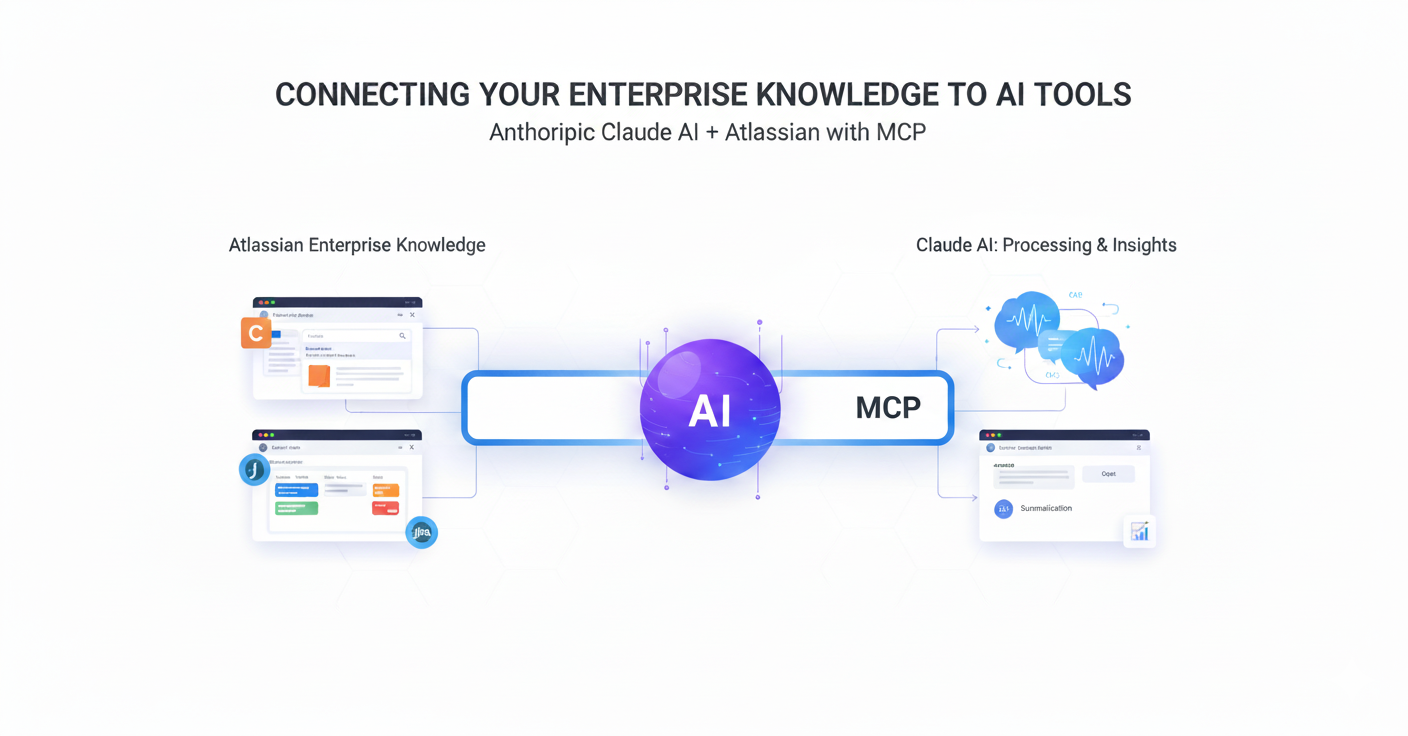
MCP Basics: An Introduction
The Model Context Protocol (MCP) is an emerging open standard that makes it easier for AI systems—especially large language models (LLMs)—to connect with external tools, data sources, and applications. Think of MCP as a universal connector or a “USB-C port for AI”: instead of every AI application needing custom, one-off integrations, MCP provides a standardized way to plug in and interact with the outside world.
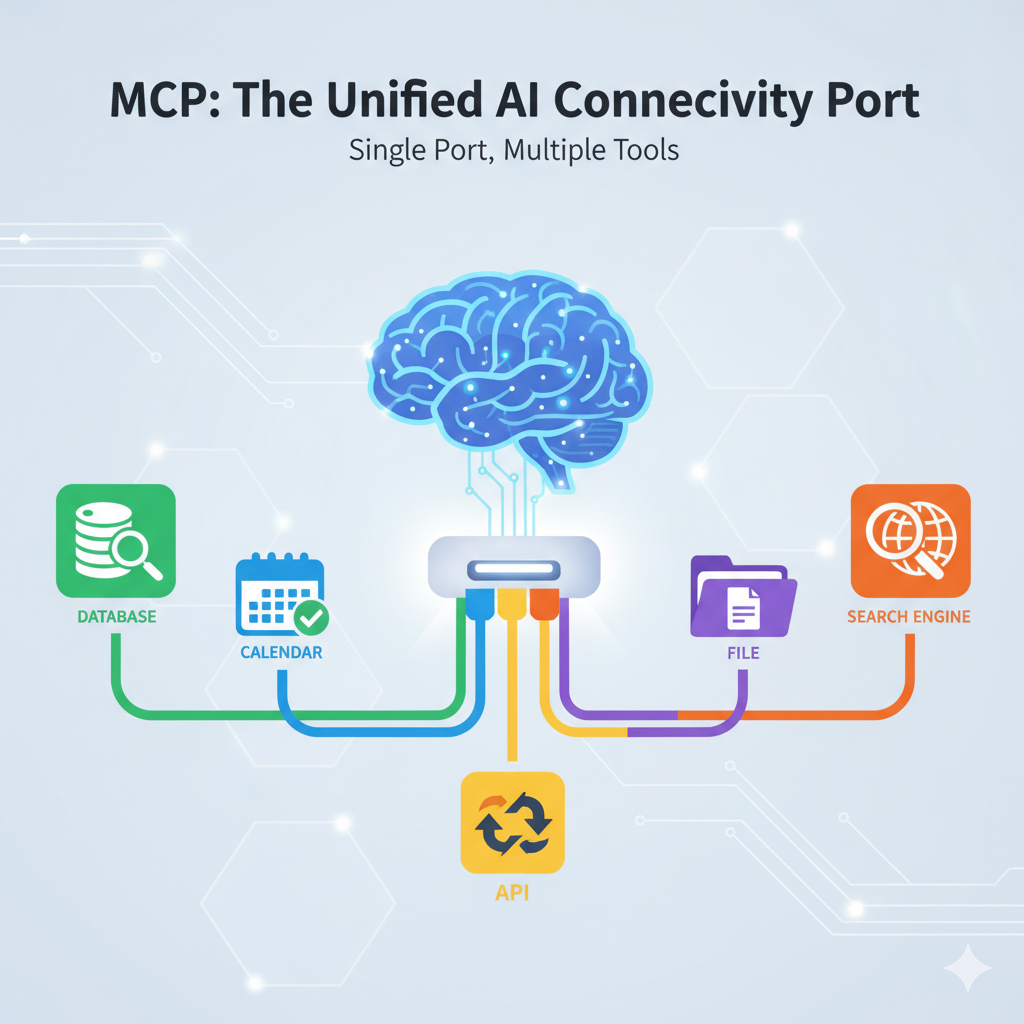
Why MCP Matters
Traditionally, connecting AI models to external systems required building separate integrations for each use case—a time-consuming and error-prone process. MCP simplifies this problem by providing a single, consistent framework. With MCP, developers and organizations can:
-
Reduce complexity
Replace dozens of custom integrations with a single protocol. -
Ensure interoperability
Use the same tools and data across different AI platforms. -
Avoid vendor lock-in
Because MCP is open and not tied to one company, it works across providers.
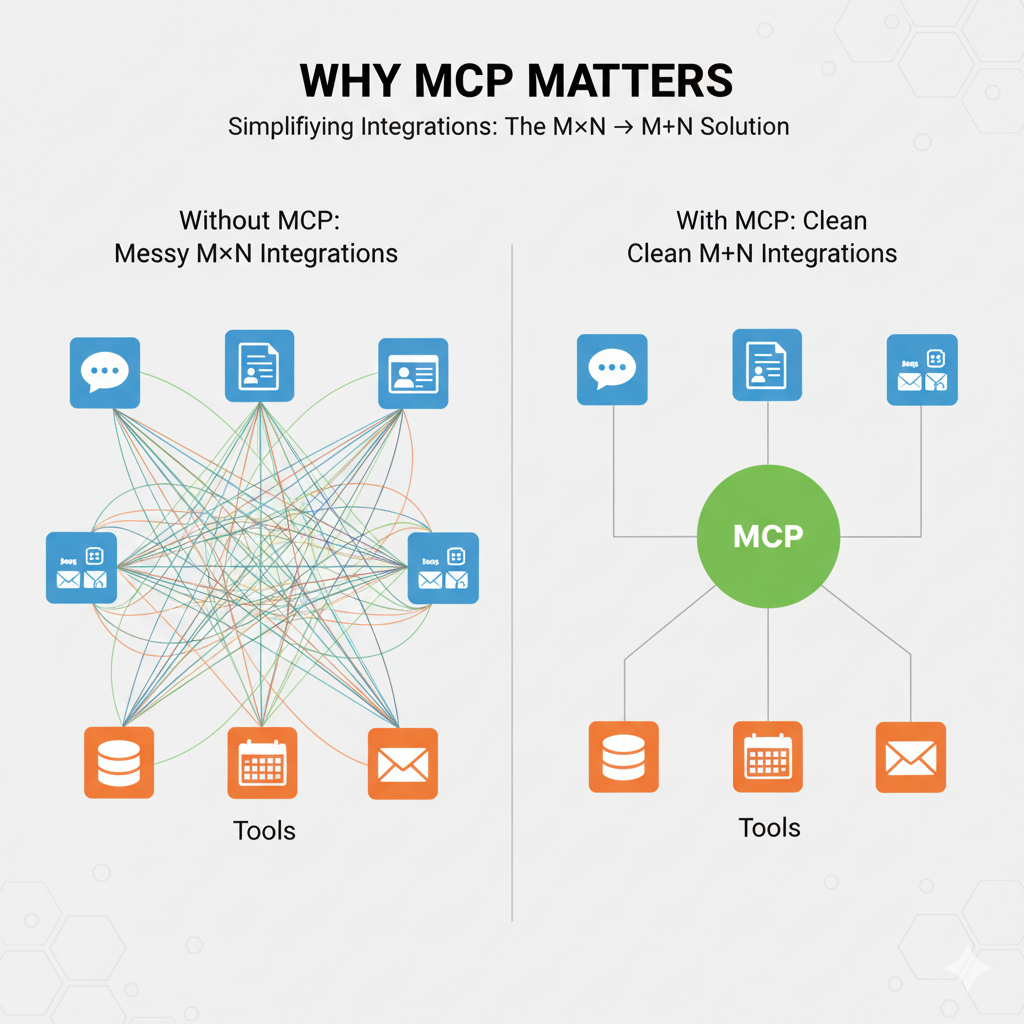
How It Works
MCP follows a client-server model, where AI applications (clients) communicate with MCP servers that provide access to tools or data. The protocol is built on well-established standards (like JSON-RPC 2.0), ensuring reliable and secure communication.
MCP is organized around a few key building blocks:
-
Resources → Information or data sources the AI can access.
-
Tools → Functions or operations the AI can perform (e.g., search a database, call an API).
-
Prompts → Predefined interaction templates that standardize how tasks are requested.
-
Sampling → A mechanism that allows servers to request AI assistance, supporting agent-like behaviors.
This structure allows MCP to be both simple for beginners and powerful for advanced use cases.
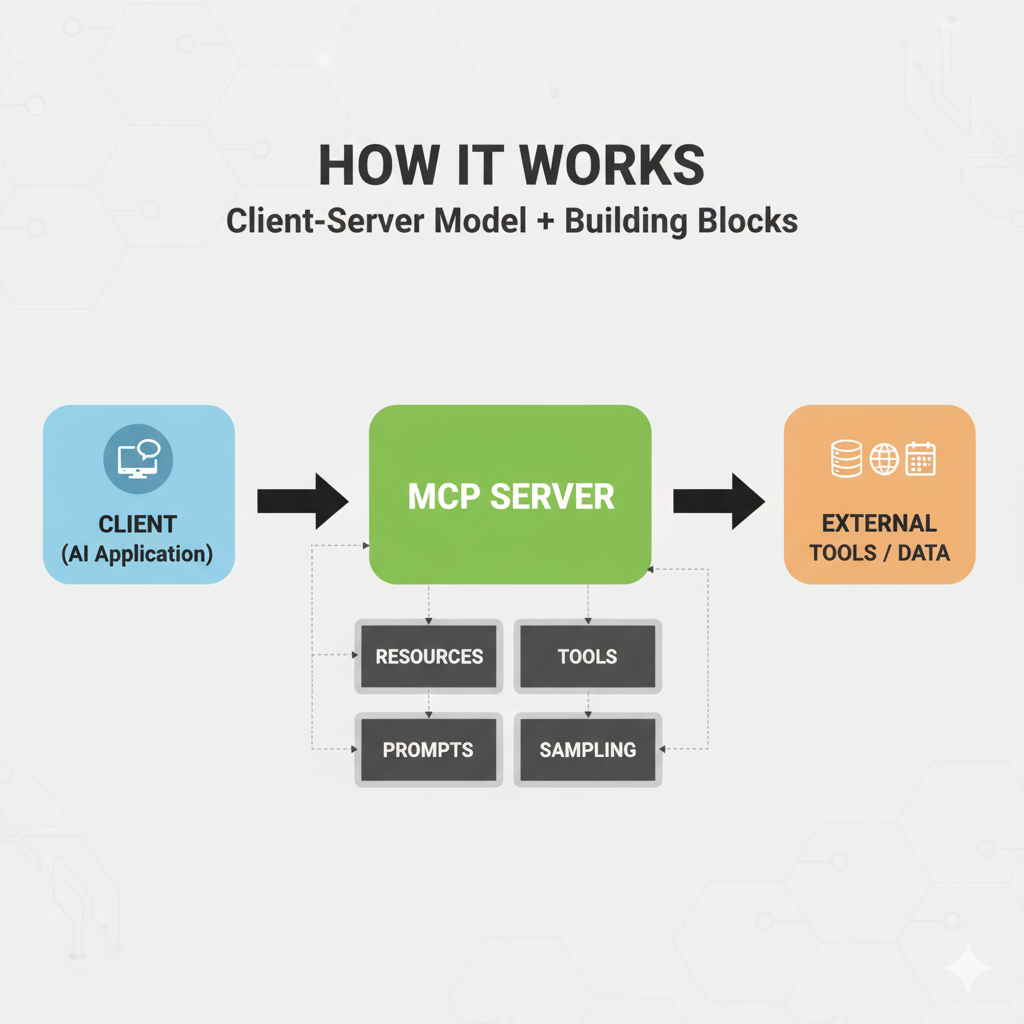
Where You’ll Find MCP
MCP is already being adopted in tools like Claude Desktop, IDEs, and cloud services, and it’s gaining traction in multi-agent systems. It can be deployed locally for development, in the cloud for scalability, or in hybrid setups that combine both.
Developers can experiment with ready-made SDKs in Python, TypeScript, Java, and more, making it straightforward to get started. Meanwhile, companies are beginning to build marketplaces and platforms around MCP, showing its momentum in the broader AI ecosystem.
From MCP Basics to Enterprise Knowledge Workflows
Understanding the Model Context Protocol (MCP) is only the first step. The real impact of MCP becomes clear when we look at how it enables AI systems like Claude to work with enterprise platforms such as Atlassian Confluence and Jira.
In many organizations, product documentation and internal knowledge live across multiple Atlassian tools. While this information is valuable, it often becomes fragmented, difficult to navigate, and time-consuming to maintain. Teams spend hours searching for the right page, aligning documentation with Jira issues, or keeping process guides up to date.
This is where MCP-driven integration makes a difference. Instead of treating Confluence or Jira as static repositories, Claude can use MCP to interact with them dynamically:
-
Discovering and summarizing knowledge across spaces and projects.
-
Generating new documentation directly within Confluence.
-
Keeping knowledge consistent across Jira, Confluence, and related tools.
The key is that MCP turns enterprise knowledge into something living and actionable. Rather than replacing human expertise, it enhances collaboration by giving teams a smarter way to surface, organize, and maintain knowledge at scale.
Official Atlassian Remote MCP Server: Confluence + Jira Capabilities
The Atlassian Remote MCP Server is the official, cloud-hosted bridge that connects Claude to your Atlassian ecosystem. It covers both Confluence and Jira, giving teams a secure way to let AI interact with enterprise knowledge while respecting existing permissions and governance.
Rather than being a long list of APIs, think of it as a set of practical abilities Claude gains when working with your content.
Navigate Knowledge Spaces and Projects
Claude can explore the structure of your Atlassian environment—whether that’s Confluence spaces(getConfluenceSpaces) or Jira projects (getVisibleJiraProjects). Using tools like atlassianUserInfo, every action happens in the right context, under the right user account.
💡 Example: “Show me all projects I can access and list the Confluence spaces for the Engineering department.”
Find and Retrieve the Right Information
With built-in search tools, Claude can:
-
In Confluence: search with searchConfluenceUsingCql or pull a specific page with getConfluencePage.
-
In Jira: search with searchJiraIssuesUsingJql or fetch details using getJiraIssue.
💡 Example: “Find all Jira issues tagged ‘Q3 release’ and summarize the related Confluence design docs.”
Create and Update Content
Claude can also add new knowledge or refresh existing material:
-
Confluence: create or update pages with createConfluencePage / updateConfluencePage.
-
Jira: create issues (
createJiraIssue) or edit existing ones (editJiraIssue).
💡 Example: “Draft a new ‘Release Checklist’ page in Confluence and create linked Jira issues for each task.”
Collaborate with Comments and Reviews
Knowledge isn’t static—it’s reviewed and refined. MCP tools support collaboration through:
-
Confluence comments (
createConfluenceFooterComment,createConfluenceInlineComment). -
Jira comments (
addCommentToJiraIssue).
💡 Example: “Add an inline comment suggesting a fix to the Onboarding Guide, and leave a Jira comment requesting review by QA.”
Keep Workflows in Sync
Beyond reading and writing, Claude can manage workflows and consistency:
-
In Jira: move issues along using transitionJiraIssue or review possible transitions with getTransitionsForJiraIssue.
-
Across tools: track links between Jira issues and Confluence pages with getJiraIssueRemoteIssueLinks.
💡 Example: “Move Jira issue ENG-123 to ‘In Review’ and link it to the Confluence spec page.”
Enterprise Benefits
With these capabilities, Claude helps organizations:
-
Reduce knowledge silos (find related Jira issues and Confluence docs instantly).
-
Accelerate documentation workflows (generate pages, keep them linked to tickets).
-
Strengthen collaboration (use comments and transitions to drive review cycles).
-
Maintain governance and security (all actions respect OAuth 2.1 and user permissions).
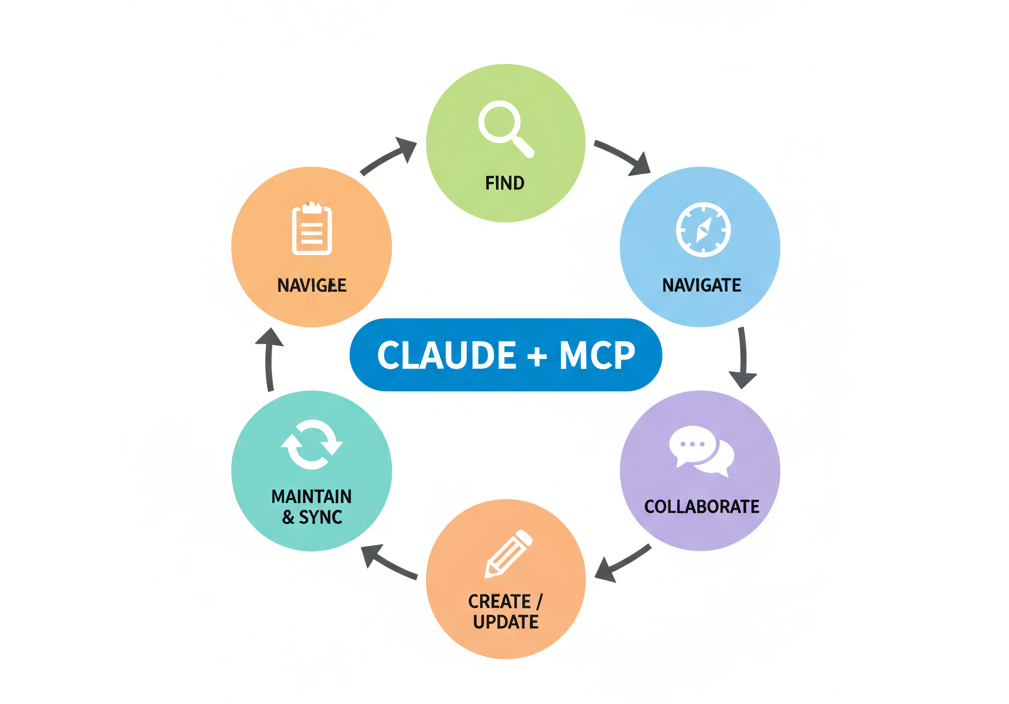
What’s Next
In this post, we explored the basics of MCP, how it transforms enterprise knowledge workflows, and the specific features of the official Atlassian Remote MCP Server for Confluence and Jira. Now it’s time to make it real. In my next blog post, you’ll see how to:
-
Set up the MCP integration step by step with Claude and Atlassian Cloud
-
Explore real-world examples of Claude creating Confluence pages, linking Jira issues, and keeping your enterprise knowledge consistent
That’s where you’ll move from understanding the concepts to actually using MCP in your daily workflows.